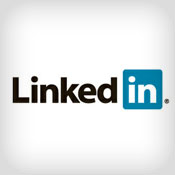
- #Linkedin data breach software#
- #Linkedin data breach code#
- #Linkedin data breach password#
- #Linkedin data breach crack#
In the case of Linkedin, it looks like the hackers obtained the data by hacking the LinkedIn API to gather the information that people uploaded to the site.
#Linkedin data breach software#
The hacker reportedly revealed that the data "was obtained by exploiting the LinkedIn API to harvest information that people upload to the site".Īccording to Oded Vanunu, Head of Products Vulnerability, Check Point Software Technologies, "This case is similar to what we previously reported about TikTok, where we were able to “query” the TikTok API and build a user database. 9to5Mac reached out to the hacker who had posted the details on the dark web. Reportedly, an unknown hacker got access to details like phone numbers, physical addresses, geolocation data, and inferred salaries of LinkedIn users.

There has been a 10,000-fold increase in the number of new threats since 2002, according to data from Symantec, the antivirus firm.In April, an individual selling the user data on a hacker forum claimed that it was scraped from 500 million LinkedIn profiles. The other, which charts the number of new computer security threats, shows the opposite. One shows the number of airplane fatalities per miles flown, which decreased to one-thousandth of what it was in 1945, with the advent of the Federal Aviation Administration in 1958 and stricter security and maintenance protocols. Kocher thinks he sees one reason in two charts he consults. Grossman estimates that the cost of setting up proper password, Web server and application security for a company like LinkedIn would be a one-time cost of “a couple hundred thousand dollars.” The average breach costs a company $5.5 million, or $194 for each record breached, according to a Symantec-sponsored study by the Ponemon Institute, an organization that tracks data breaches. But what mystifies security experts is why breaches keep happening. The motivation of the hackers is apparent. “You don’t give up the crown jewels so other people can match them up,” said Jeremiah Grossman, founder and chief technology officer of WhiteHat Security. In its blog post, LinkedIn noted that the user names associated with those passwords had not been posted online, but security experts say that is probably because whoever breached its systems simply kept those for themselves. Kocher estimates that some 95 percent will eventually get cracked. By Thursday, some 60 percent of passwords had already been decoded.


#Linkedin data breach crack#
In this case, hackers posted a list of 6.4 million hashed passwords online and asked others to help crack them.
#Linkedin data breach password#
In a blog post after the breach, Vicente Silveira, a director with LinkedIn, said the company had invalidated passwords for compromised accounts and said members would “benefit from the enhanced security we just recently put in place, which includes hashing and salting of our current password databases.”īut Julie Inouye, a spokeswoman for LinkedIn, would not say when the company started hashing and salting its passwords, or why it did not enact these security measures in the first place. (An A+ security grade involves hashing passwords with complex cryptographic functions, salting them, hashing the result again and storing those credentials on separate, secure Web servers where hackers cannot easily break in.) Salting passwords, security experts say, is Security 101 - a basic step that LinkedIn, eHarmony and all failed to take.
#Linkedin data breach code#
To make hackers’ jobs more difficult, diligent companies will append a series of random digits to the end of each hashed value, a process known as “salting,” which requires only a few more lines of code and can be done at no cost. Some sites publish as many as 50 billion hash values. Other hackers use “rainbow tables,” which list hash values for nearly every alphanumeric character combination, up to a certain length.

Some sites contain sublists of foreign passwords - in Finnish, say - or even religious-themed passwords (“angel,” “Jesus” and “God” were among the top 15 LinkedIn passwords cracked). To crack hashed passwords, they exploit so-called dictionaries, extensive online databases of common passwords and their precalculated hash values. They use automated tools that can test up to a million passwords a second. The most basic step they can take to protect passwords is camouflage them with basic encryption - what is known as “hashing” - in which they mash-up a password with a mathematical algorithm and store only the encoded, or “hashed,” version.īut hackers are a determined bunch. That was the case with RockYou, a gaming site that lost 30 million user passwords in a 2009 breach. The most negligent thing a company can do with users’ passwords is store them in plain text. On a grading scale of A through F, experts say, LinkedIn, eHarmony and would get, at best, a “D” for password security.


 0 kommentar(er)
0 kommentar(er)
